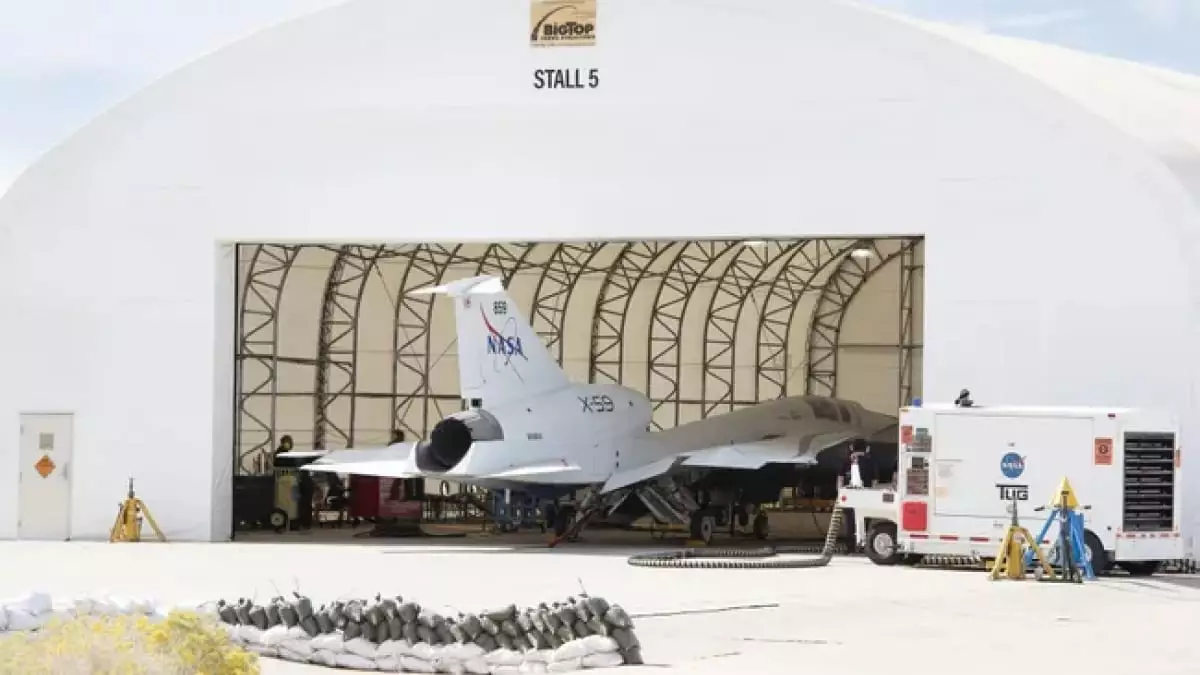NASA’s X-59 aircraft, designed to revolutionize air travel, has recently achieved a pivotal milestone in its development journey. The aircraft’s engines were successfully ignited for the first time, an event marking a significant advancement as engineers at Lockheed Martin’s Skunk Works in Palmdale, California commence a series of rigorous engine tests. These tests, which began in late October, are critical for evaluating the aircraft’s operational capabilities and ensuring its systems are intricately integrated prior to its maiden flight. Although a definitive date for this inaugural flight remains unspecified, the progress made thus far indicates that the X-59 is on track for its ambitious goals.
Initial engine tests focused on low-speed operations, enabling engineers to detect any potential leaks and validate the functionality of vital systems, including hydraulic and electrical components associated with the engine. Following the completion of these essential checks, the team proceeded to a full-power engine test to conduct a comprehensive evaluation. According to Jay Brandon, NASA’s chief engineer for the X-59 project, these preliminary tests serve as an essential ‘warmup’ phase designed to verify that the engine operates effectively and supports various aircraft systems crucial to flight operations.
The X-59 is equipped with a uniquely modified F414-GE-100 engine, a derivative of the powerful F414 series commonly used in the U.S. Navy’s Boeing F/A-18 Super Hornet. To better understand and predict the acoustic profile the X-59 will emit during operation, NASA has utilized F/A-18 jets as analogs for simulating sound levels. The intention is for the X-59 to achieve speeds of up to Mach 1.4 while cruising at an altitude of 55,000 feet, all the while producing a sound barely louder than a gentle “thump,” a stark contrast to the disruptive sonic booms historically linked to supersonic flight.
One of the X-59’s most striking features is its elongated, streamlined nose, which, at over 11 meters in length, is a fundamental design element aimed at noise reduction. This innovative structure could potentially reshape regulations governing supersonic flight over populated areas, allowing for a new era of quieter high-speed travel that remains respectful of communities below.
Additionally, NASA unveiled a groundbreaking cockpit design that completely eliminates the traditional forward-facing window. Instead, the cockpit is equipped with an advanced “eXternal Vision System,” utilizing augmented reality to give pilots a comprehensive forward view through digital displays fed by multiple cameras. Pam Melroy, NASA’s Deputy Administrator, emphasized that this novel technology compensates for visibility challenges that arise from the aircraft’s distinctive design.
As the X-59 moves towards future testing phases, engineers will rigorously assess the aircraft’s performance under varying simulated conditions, including critical taxi tests that will ensure safe and effective ground operations. Once it takes to the skies, the X-59 will fly over select U.S. cities to gauge the public’s response to its quieter flying capabilities, collecting valuable data that supports NASA’s mission of establishing a quieter, environmentally friendly supersonic commercial flight future.
With each step the X-59 takes in its development journey, the potential for a transformative leap in air travel becomes increasingly tangible, paving the way for innovations that could redefine how we experience speed in aviation.

Leave a Reply